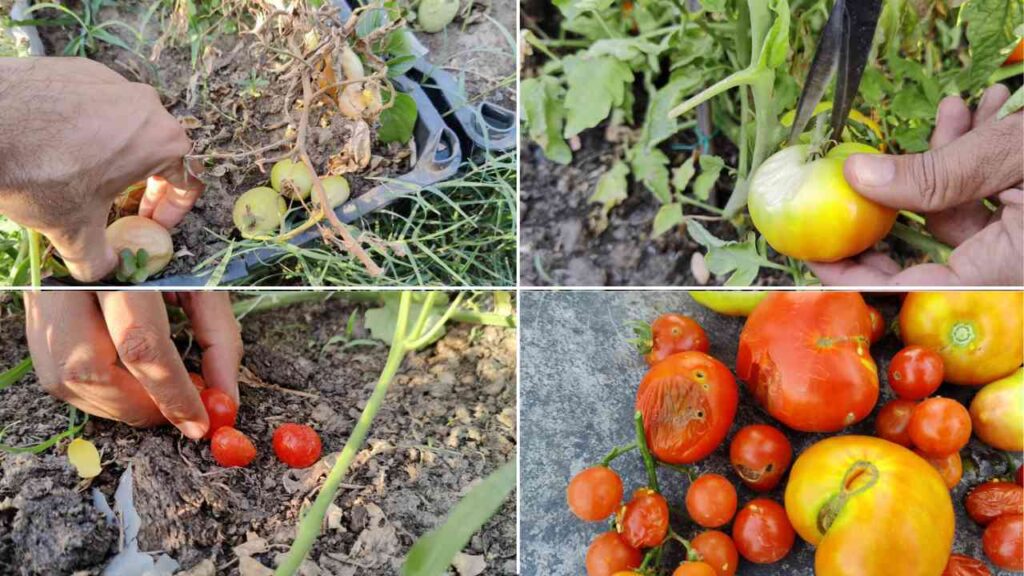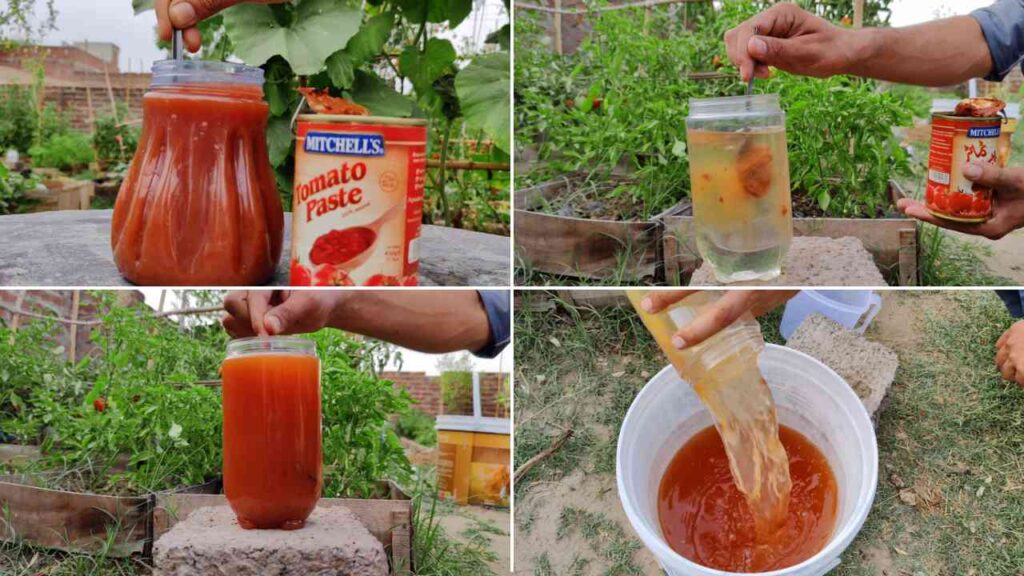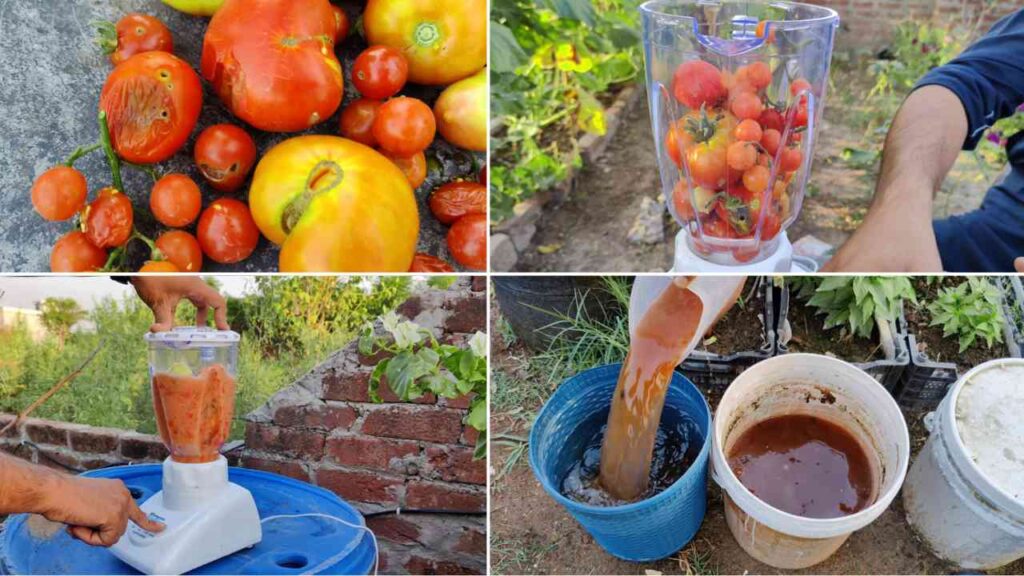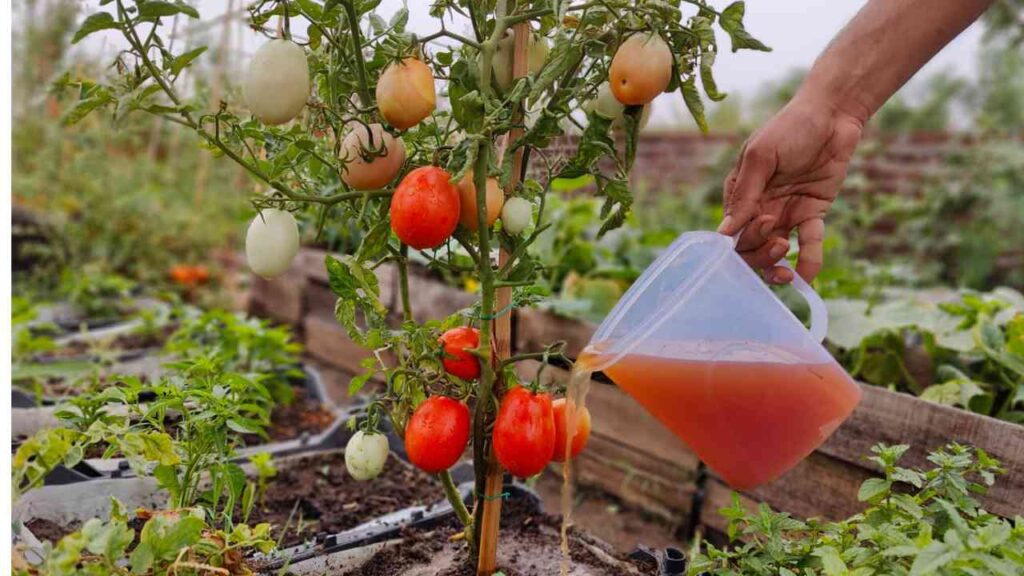One of the best parts of gardening can be growing tomatoes at home, especially when you see the fruits of your work ripen on the vine. Your tomato plants need more than just water and air to grow well, though. They also need the right nutrients to become strong, healthy, and productive. Store-bought fertilizers can be helpful, but they often have chemicals in them that can hurt your plants and the earth if you don’t use them right. The good news is that you don’t have to use anything expensive or full of chemicals. Simple, everyday items that you can find in your home or yard can be used to make your own natural fertilizers.
Not only do homemade fertilizers save you money, they are also better for the environment than store-bought ones. This way, your tomato plants will grow in a way that is healthy and good for the earth. We will talk about some of the best homemade tomato fertilizers in this article, including how they work and how to make and use them.
Recycle Tomato Parts for Nutrient-Rich Fertilizer

Like all living things, tomato trees are full of nutrients that our bodies need. You don’t have to throw away plant parts like leaves, extra seedlings, suckers (the small shoots that grow between the stem and branches), or suckers. Instead, you can recover them by making a fertilizer full of nutrients. This is an excellent way to garden in a way that is good for the environment because it helps your plants grow and cuts down on waste.
First, gather the lower leaves of your tomato plants and any seedlings or suckers that you don’t want to put in. Tomato plants need nutrients like nitrogen, potassium, and phosphorus, but these parts are often thrown away even though they are full of them. Put these parts into a 5-gallon bucket and fill it with water that doesn’t contain chlorine. Let tap water sit for 24 hours or use rainwater if you can. This will get rid of the chlorine. Make sure that all the plant matter is covered by stirring the liquid well.
Putting the bucket somewhere quiet and out of direct sunlight, cover it with a lid that isn’t too tight. Leave the mix alone for a week or two. This is when the nutrients from the plant parts will leak into the water and turn it into a strong liquid fertilizer. For better nutrients, let it steep for a longer time. So, don’t rush this step. After one to two weeks, strain out the dry plant matter and mix one part fertilizer with ten parts water to thin out the liquid. Now you can water your tomato plants with this mix. This homemade fertilizer gives tomatoes a steady supply of the nutrients they need while also reducing waste and supporting sustainability.
Easy Tomato Paste Fertilizer for Stronger Growth

When you think of fertilizers, tomato paste might not be the first thing that comes to mind, but it works surprisingly well. Tomato paste is a great way for tomato plants to get the nutrients they need, especially when they are growing and fruiting. It is high in potassium and phosphorus. The best part? It’s very simple to make and doesn’t cost much.
You only need to mix two tablespoons of tomato paste with one liter of water to make this fertilizer. It needs to be stirred very well until the paste is gone and the water turns a deep red color. Add 10 liters of water to a bigger bucket and then pour this mixture into it. Again, stir the fluid to make sure everything is mixed.
You can use this fertilizer in two different ways. You can put it right on the leaves of your tomato plants with a sprayer. This is called foliar feeding. Foliar feeding lets the plant quickly receive nutrients through its leaves, which gives it a boost right away. Even though you should still water the roots often, giving your plants this tomato paste solution once a week can give them extra nutrients they need to grow strong and healthy. Because this fertilizer is gentle and pure, you won’t have to worry about giving your plants too much food. You won’t have to worry about chemical buildup because you’ll be giving them the nutrients they need to grow.
Boost Tomato Fertilizer with Compost Tea

If you want a really strong and healthy option, try mixing tomato paste with compost tea. If you steep garbage in water, you get compost tea. It’s full of good microorganisms that help plants grow and the soil stay healthy. When mixed with the nutrients in tomato paste, it makes a very complete fertilizer that can help your plants from the roots to the leaves.
First, add one liter of water and four tablespoons of tomato paste. Stir the mixture until it is smooth and very red. Put this into a bigger bucket with 8 liters of water and mix it well. Next, make compost tea by letting compost soak in water for one to two days. Then, strain the tea to get rid of the solids. Pour the waste tea into the bucket until it’s about 15 liters full.
Sometime between one and three hours, let the ingredients mix together. You can either put the fertilizer right on the ground around your tomato plants or spray it on their leaves. The tomato paste adds important nutrients like potassium and phosphorus that help flowers and fruits grow. The compost tea, on the other hand, adds organic matter and good bacteria that make the soil healthier and help plants absorb nutrients. By encouraging strong root growth, healthy leaves, and lots of fruit production, this mix is a great way to get the most out of your tomato harvest in a natural, long-lasting way.
Turn Overripe Tomatoes into a Fertilizer

People who have had overripe or broken tomatoes that they couldn’t use know how disappointing it is to have to throw them away. You don’t have to throw these tomatoes away; you can use them to make a strong homemade fertilizer that will give your tomato plants extra nutrients.
Start by gathering overripe or broken tomatoes, making sure to get rid of any areas that are sick or full of pests. To make smooth tomato juice, blend the tomatoes with one liter of water. Put this juice and 10 liters of water into a big container. To get extra nutrients, add 10 liters of compost tea. To make compost tea, soak compost in water for two days and strain out the solids.
It’s best to mix the fertilizer well and let it sit for 24 hours so the nutrients can grow. Your fertilizer is ready to use after this time. You can put it right on the ground around your tomato plants or use it to water seedlings. Vitamins, minerals, and other nutrients in the tomatoes will help the plants grow in a healthy way. The compost tea adds good bacteria to the soil, which makes it healthier and makes it easier for plants to take in nutrients. This is a great way to reuse trash and make fertilizer for your yard that is also good for the environment.
Conclusion: Sustainable, Homemade Fertilizers for Thriving Tomatoes

Making your own fertilizers is an easy, cheap, and environmentally friendly way to get strong, healthy tomato plants. These natural fertilizers give your plants the nutrients they need to grow, whether you use tomato paste, overripe tomatoes, plant parts, or even compost tea. Making these fertilizers at home not only cuts down on waste, but it also encourages gardening methods that are good for the earth and your plants.
You will see that your tomato plants get stronger, healthier, and more productive when you use these homemade fertilizers in your gardening. You can care for the environment and grow a garden at the same time with a little work and imagination.

